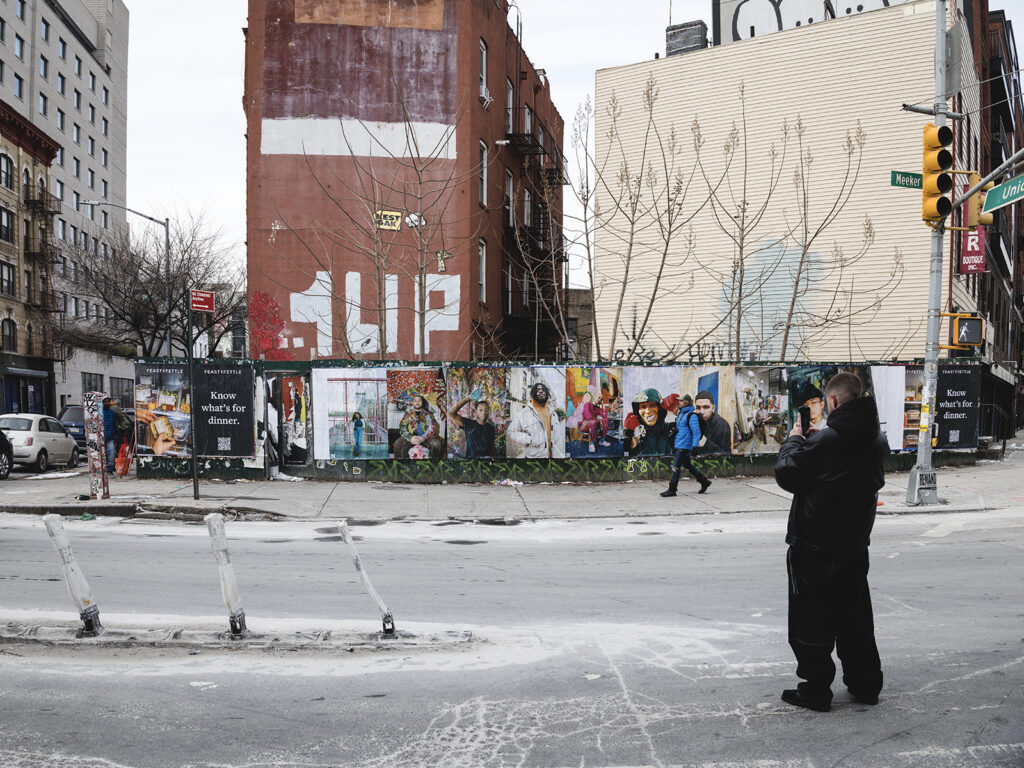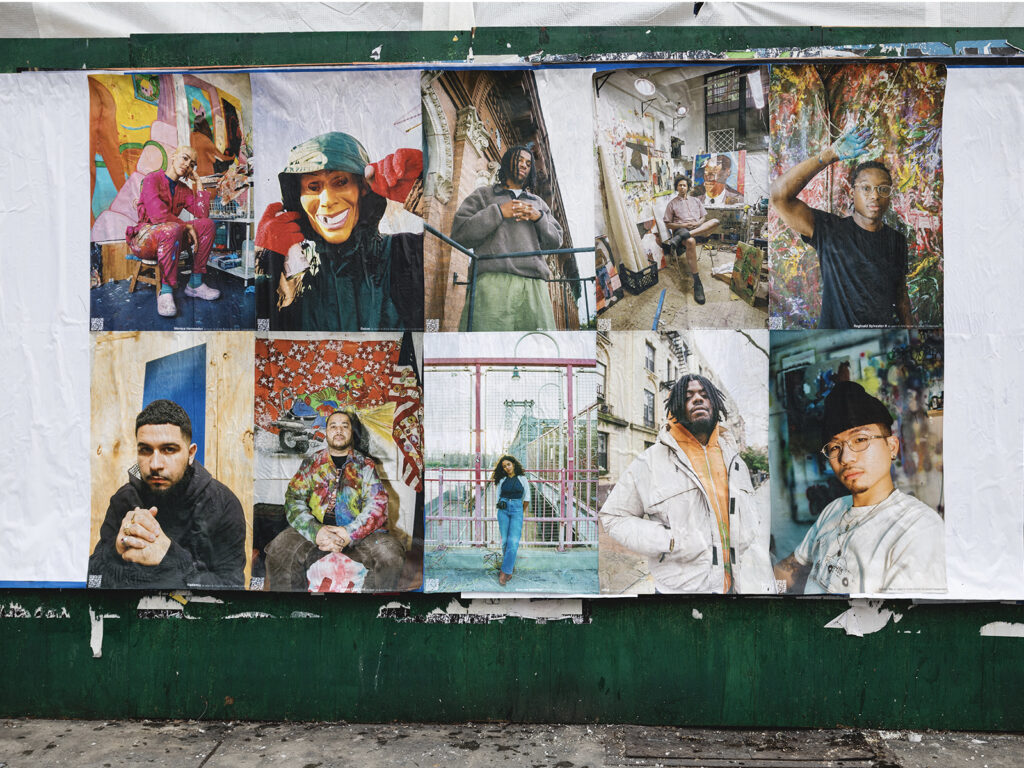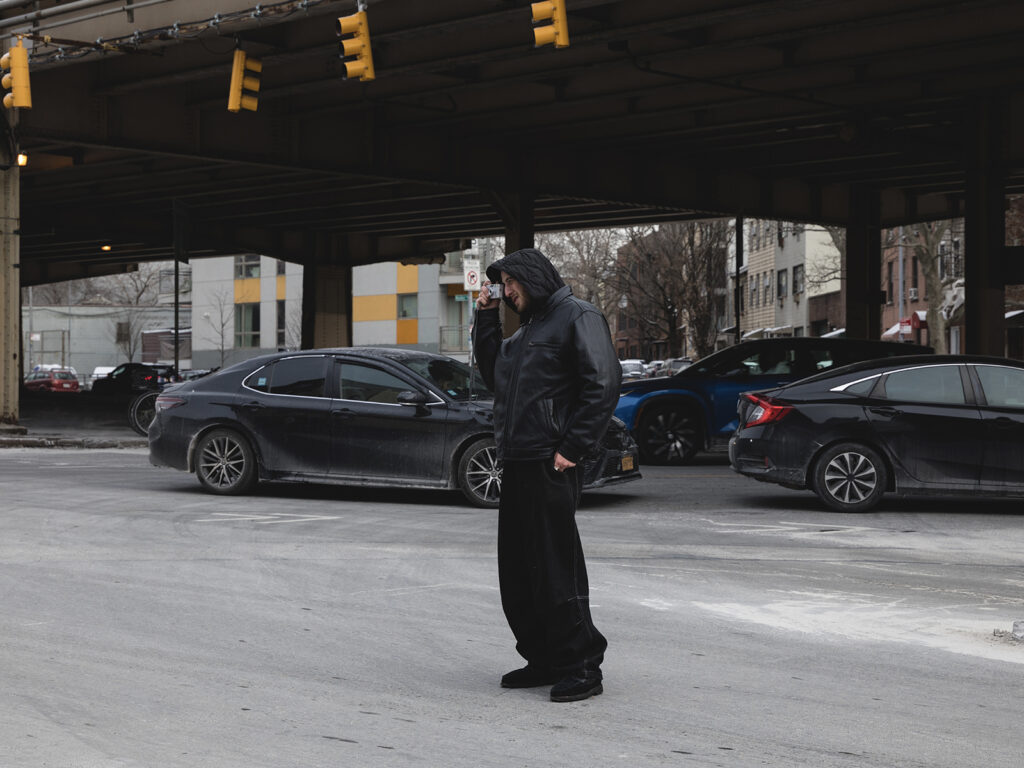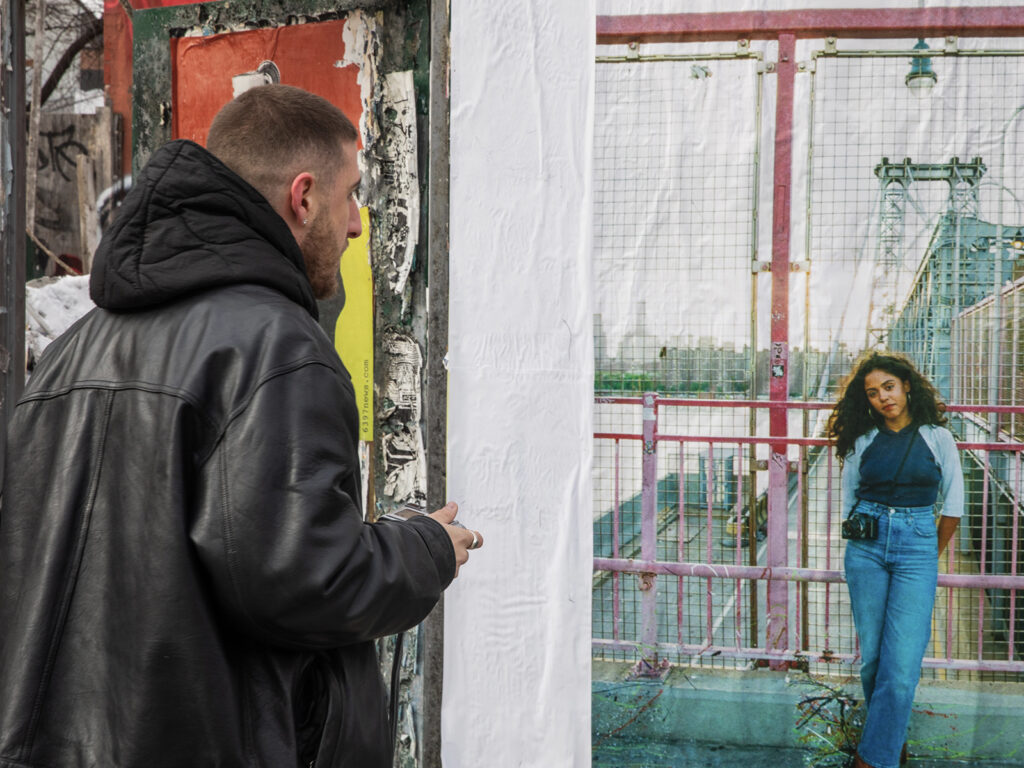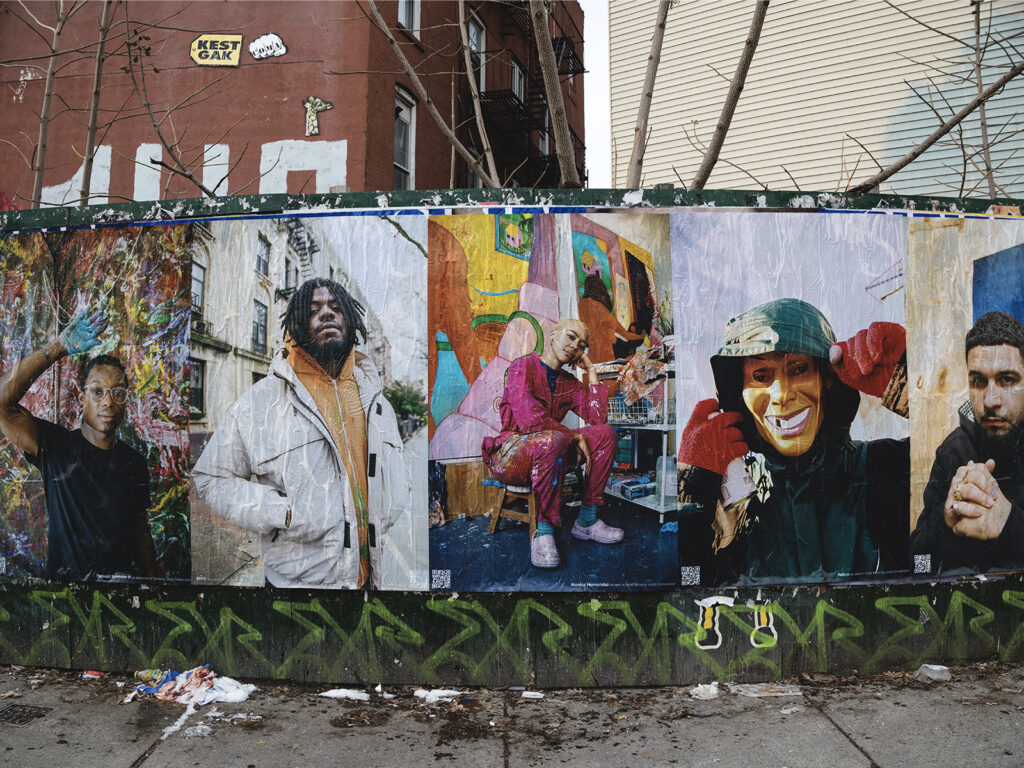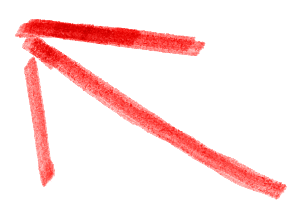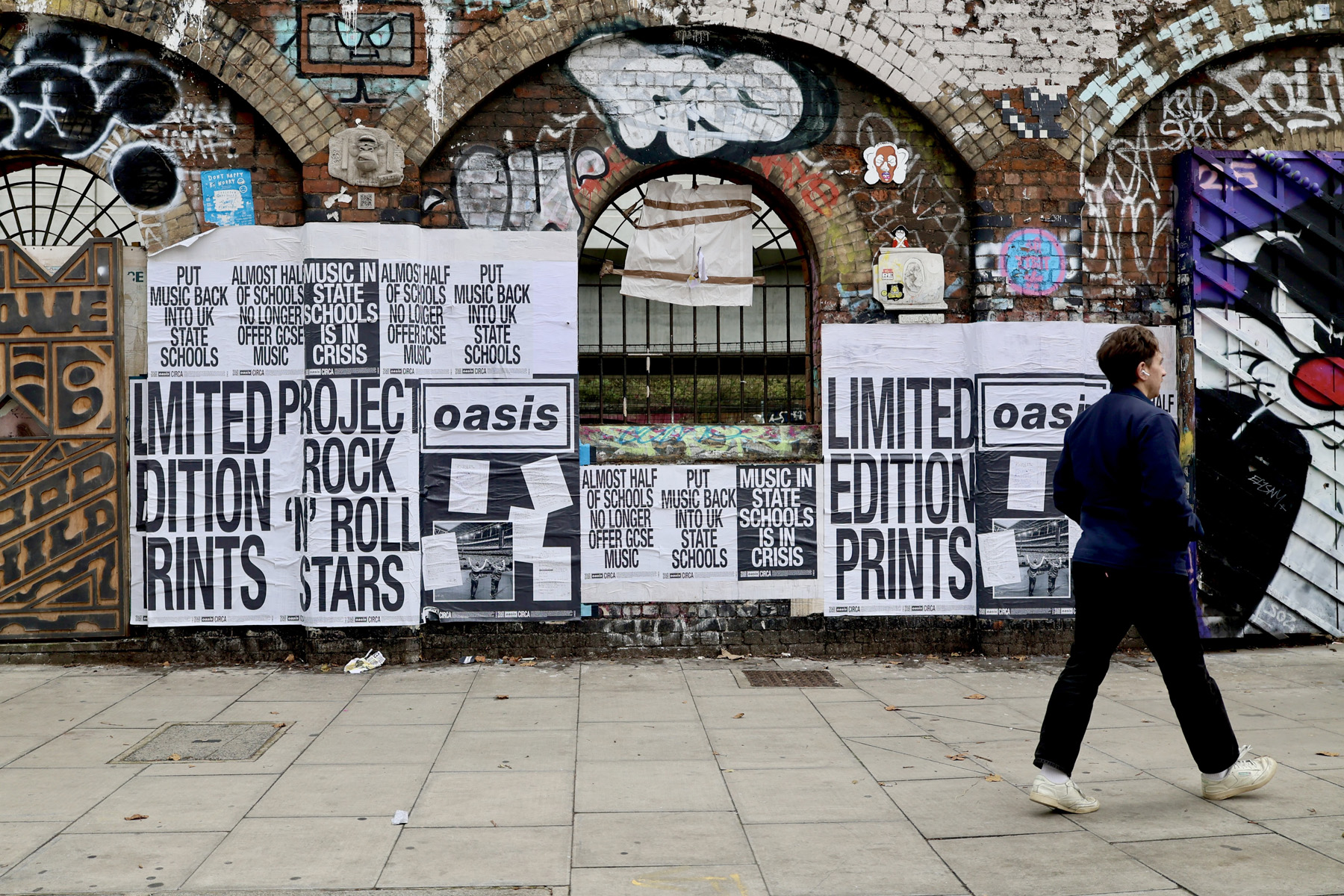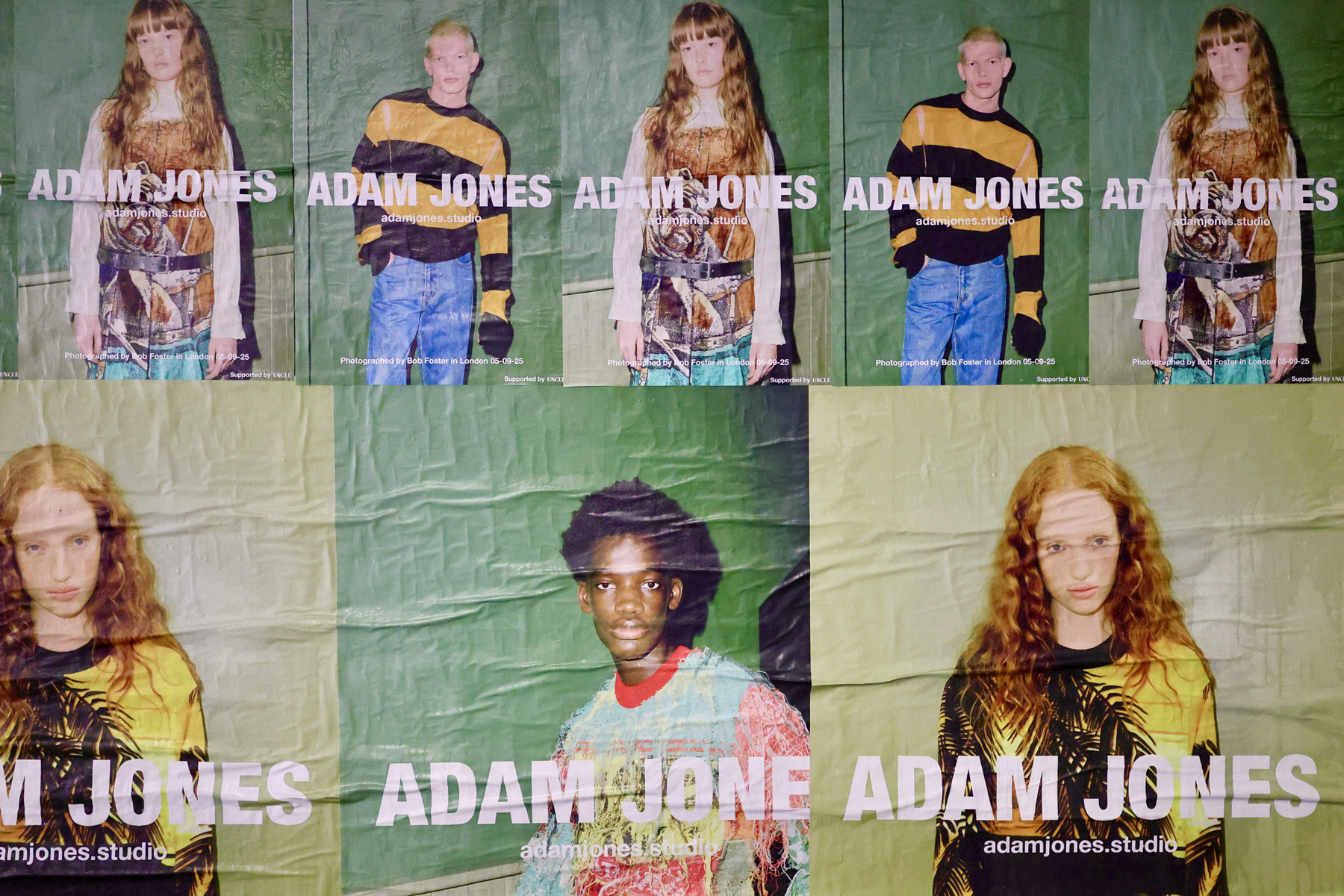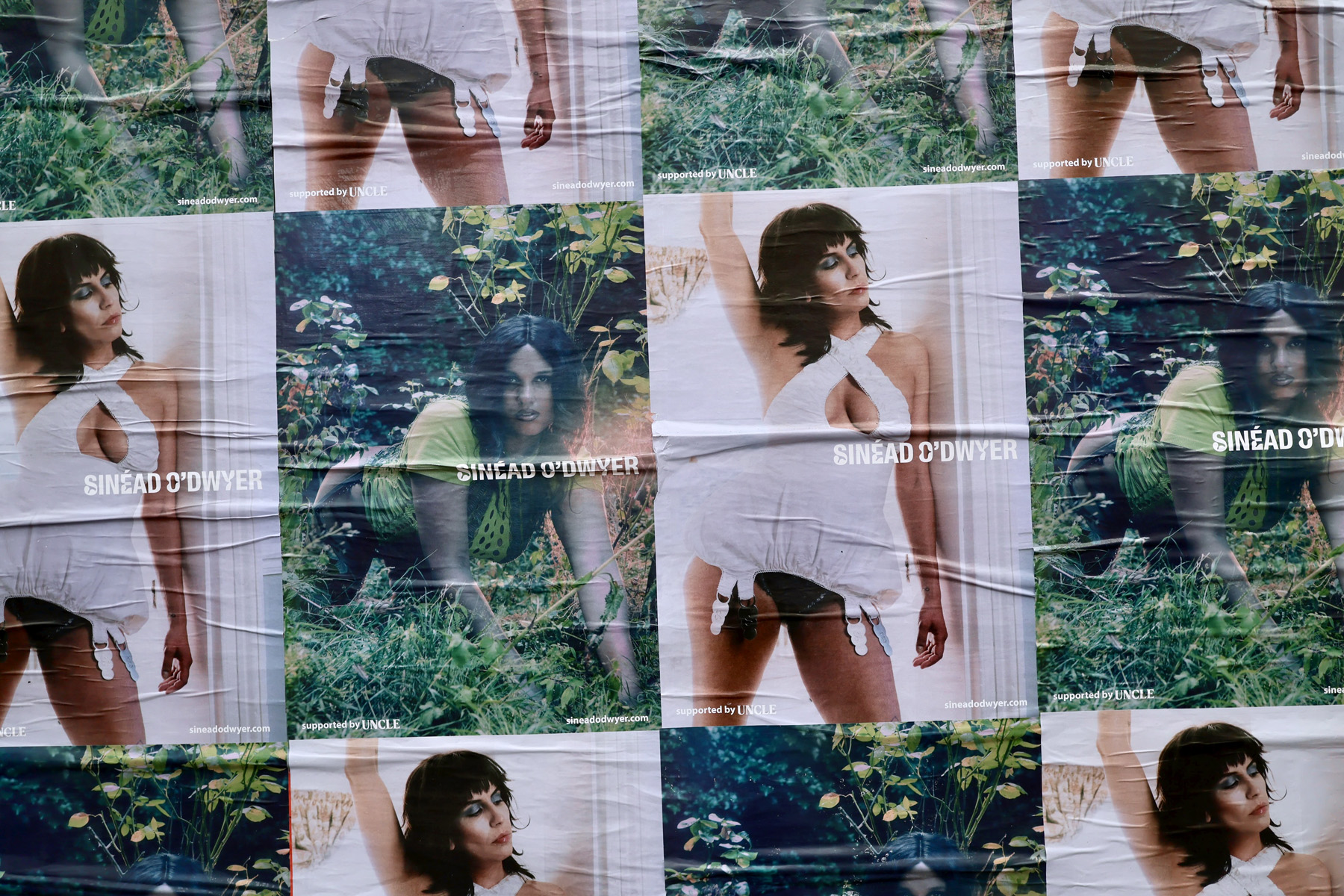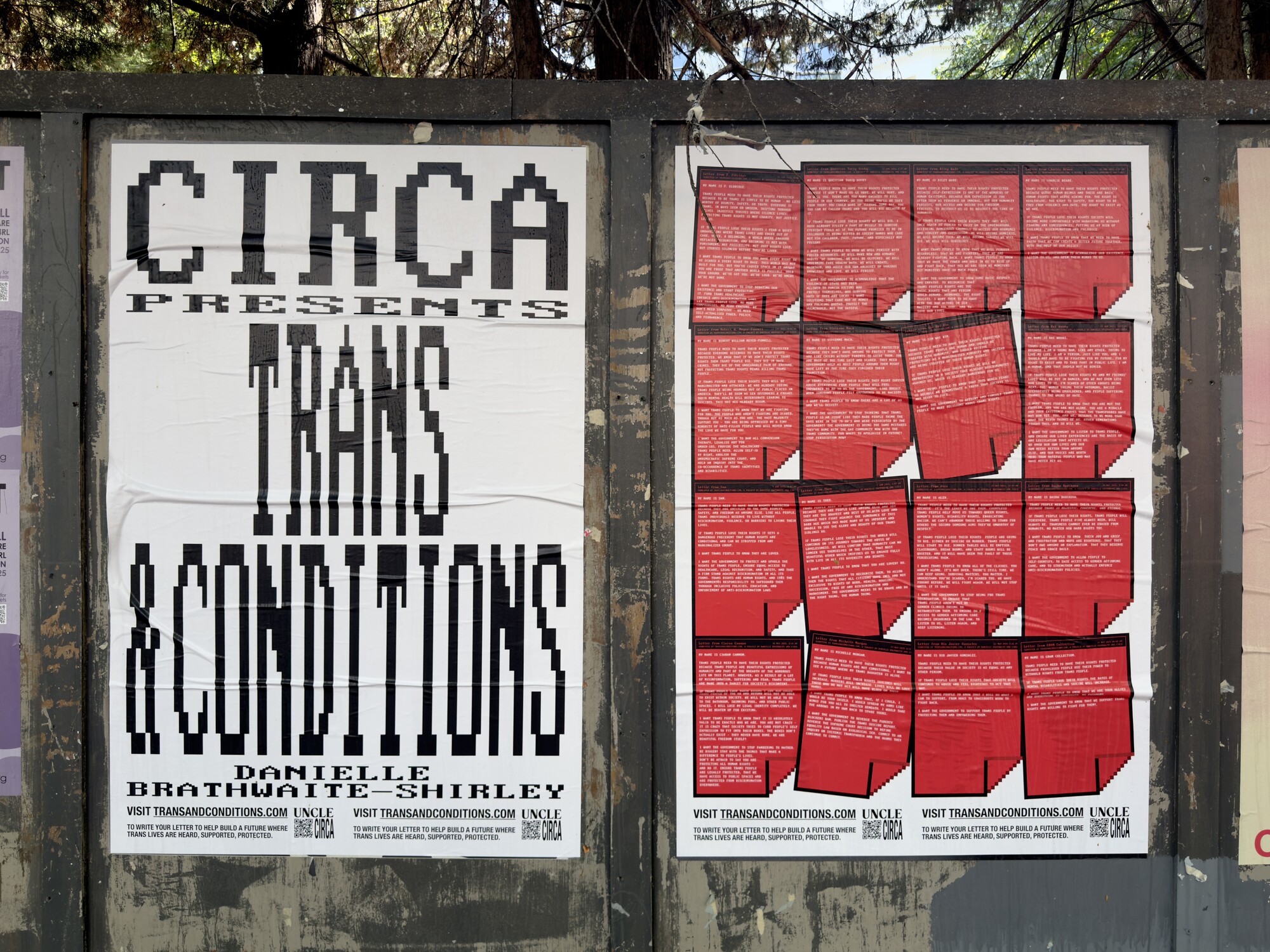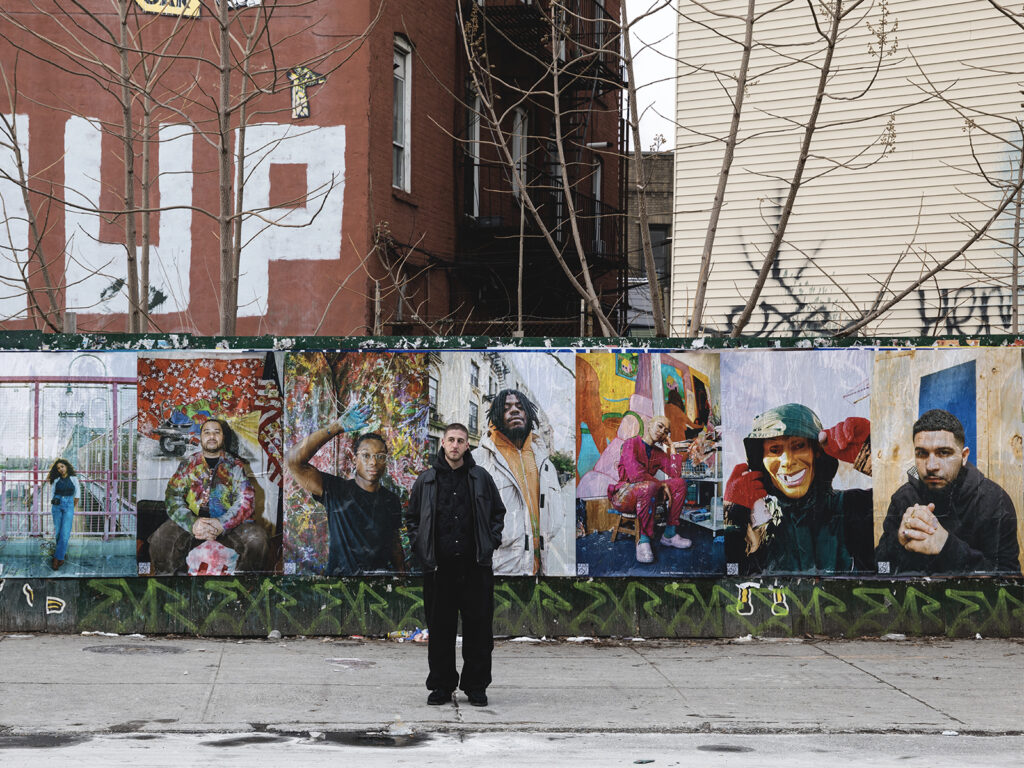
Jacob Consenstein believes New York art is in a golden age right now.
It’s a big statement, but one made by someone who has covered lots of ground and documented just as much in the last decade or so. Jacob was one of the teenagers snatching disposable cameras off CVS shelves – not for mischief, but to capture what was happening around him and his peers in his hometown.
It wasn’t about capturing a “scene” – labels like that come later, applied in hindsight. It was about instinctively preserving moments that felt meaningful: friends creatively reinterpreting the city around them, graffiti becoming more than marks on walls, skating, and parties where hanging out might be the main prerogative, but the sharing of new music and meeting of like-minds an unexpected party favour.
Inspired by those who came before him in street photography, film, music, and more, Jacob sees young New Yorkers carrying on a lineage of creativity that, from the outside, can seem like a rite of passage for growing up in the city. But the idea that New York’s culture and creativity simply “happen” is a myth. The competition, the cost, and the constant motion drive people to connect, collaborate, and create.
For Jacob, this dynamic is reflected in the way art forms intersect. His photography doesn’t just stand alone; it blends seamlessly with music, writing, and storytelling. Projects like his self-published Artist Series – currently wheatpasted by UNCLE on city walls – amplify voices across disciplines, featuring the likes of MIKE, duendita, Deem Spencer, and Sabrina Santiago. Through portraits and interviews, Jacob captures not just individuals but the collective energy of a city that thrives on collaboration.
It’s this hustle and exchange that has fueled Jacob’s wider success, from commercial campaigns with NIKE and adidas to exhibitions across New York. These accomplishments don’t just showcase his talent; they underscore how deeply his work is rooted in the city’s ethos – one that rewards those who contribute something meaningful to its ongoing narrative.
This exchange of energy, effort, and ideas is what keeps New York ticking. Its rich cultural history sets a high bar but for Jacob, it’s a source of inspiration and a challenge to contribute something meaningful to the city’s ever-evolving creative lineage. As he puts it, “If you contribute positively and are prolific, what you give to the city, it gives you back tenfold.”
Even a city as famous for culture and creativity as this one needs people to get off the couch, snatch a couple of film cameras, and make it happen. Golden age or otherwise.
INTRODUCE YOURSELF IN YOUR OWN WORDS. HOW WOULD YOU DESCRIBE WHO YOU ARE AND WHAT YOU DO AS A PHOTOGRAPHER?
My name is Jacob Consenstein. I’m a photographer and director, born and raised in New York. For the past twelve years, I’ve focused on capturing streetwear, youth culture, music, graffiti, and fashion. Over the last few years, I’ve also delved more into commercial and campaign work. At my core, though, I see myself as a creative and a storyteller – someone who uses photography to reflect and amplify the culture around me.
HOW DID YOU FIRST GET INTO PHOTOGRAPHY, AND WHAT DREW YOU TO IT AS A CREATIVE MEDIUM?
I didn’t come from a family with a background in the arts – both of my parents were community college teachers, and most of my extended family worked in education or social services. So, I stumbled into photography pretty organically.
I transferred high schools and ended up at one that offered internships instead of traditional classes. My advisor there was the first person to suggest that a creative path was even viable. That idea had never really been presented to me before. I ended up leaving high school a semester early and cold-emailed people at places I was drawn to at the time, like Mass Appeal magazine and Only NY.
At the same time, my friends and I were immersed in graffiti, skateboarding, and throwing parties around New York. I was so proud of what was happening in that world that I wanted to document it. I started shoplifting disposable cameras from CVS to take photos constantly. Eventually, a friend gave me my first real camera in 2014 or 2015. Photography was the first thing I felt genuinely good at, it clicked with me in a way school never did.
From there, I just kept documenting my surroundings and figuring it out as I went. It’s been a very non-traditional route to get to where I am now, but it’s always felt natural to me
WERE THERE ANY EARLY INFLUENCES I.E. PHOTOGRAPHERS, ARTISTS, OR MOMENT THAT SHAPED YOUR APPROACH TO PHOTOGRAPHY?
A lot of my early influences came directly from my surroundings. Growing up on the Upper West Side of Manhattan, I was constantly surrounded by culture. It’s the birthplace of hip-hop, and my sister, who’s eight years older than me, was into punk, ska, and hip-hop. My dad was a Deadhead, my mom loved disco and the B-52s, and I got deeply into ’90s hip-hop and boom bap. That mix of styles and cultures really shaped me.
I was fascinated by uptown New York culture – how vibrant and raw it was. The ‘old heads’ on the street, the music, the style, it all inspired me. I also admired downtown kids like Harold Hunter and the OG Supreme crew. They were like blueprints for how creativity and culture could intersect.
A lot of my inspiration also came from streetwear. When I was working at those brands, I met a lot of scrappy people doing cool stuff. One founder used his friends’ screen printing labs at FIT (Fashion Institute of Technology) to launch his brand. People were just hustling – skateboarders, graffiti artists, musicians – they were all making things happen, and I thought it was amazing and I really connected to the grassroots nature of it.
That passion turned into an obsession. I started to nerd out about the culture, researching and dedicating time to understanding it. My peers and surroundings were my biggest inspirations. They still are, in many ways.
YOU OFTEN SHOOT ON FILM, WHAT APPEALS TO YOU ABOUT FILM PHOTOGRAPHY COMPARED TO DIGITAL? DO YOU FIND THE PROCESS OR RESULTS DIFFERENT?
There’s something about film photography that feels timeless. For me, it’s the process as much as the results. I love the delayed gratification – taking a photo, letting the roll sit until it’s finished, and then waiting to develop and scan it. That slower, physical process makes each shot feel more intentional.
Film also has a tactile quality that I find really appealing. Even with my digital work, I’ll sometimes print and scan it to give it more texture and life. There’s an innate depth to film that’s hard to replicate digitally – it feels more human, and I think people naturally respond to that.
I started on film, too. Someone gave me a Pentax K1000, and it was the first camera I owned. It taught me the fundamentals—how to understand aperture, lighting, and the mechanics of photography. That hands-on learning shaped how I approach every photo I take.
That said, I’ve grown to appreciate digital photography in its own way. It’s industry standard for commercial work, and I’ve found a creative relationship with it over time. I wouldn’t say I prefer one over the other anymore—they’re both equally interesting to me now, just in different ways.
SOCIAL MEDIA PLATFORMS LIKE INSTAGRAM WERE ONCE PHOTOGRAPHY-FIRST SPACES, BUT THEY’VE SHIFTED TOWARD VIDEO CONTENT AND ALGORITHMS. HOW HAS THIS IMPACTED YOU AS A PHOTOGRAPHER?
I think there’s no denying that Instagram and similar platforms have shifted significantly over the years. When I first got on Instagram, it felt like a space where photos could be appreciated as an art form in their own right. Now, with the push toward video content and algorithm-driven trends, it’s harder for photography to stand out in the same way.
That said, I’ve always seen the value of presenting work physically. There’s something uniquely impactful about seeing art in person on the street or in a gallery, rather than on a screen. That’s part of what I love about this project with UNCLE, where the work exists in public spaces for everyone to see. It removes the hierarchy of galleries and makes art accessible in a raw, immediate way.
The changes in social media remind me how important physical displays of work are. They’ve encouraged me to focus on projects like this, where the art exists outside the digital space.
DO YOU SEE SOCIAL MEDIA AS A TOOL OR A CHALLENGE FOR SHOWCASING YOUR WORK TODAY?
For me, social media has been mostly positive. I’ve always treated Instagram like a portfolio – a way to share my work and tell the stories behind it. I think that mindset has helped me stay grounded as the platform has evolved. It’s a tool for connecting with a community and showcasing what I do, but I try not to let the pressures of algorithms or trends affect my creative process too much.
Of course, social media has its challenges, especially with how saturated it’s become. But I’ve been lucky to grow a network of people who genuinely appreciate my work. Every post feels like an offering to them, and I focus on creating something meaningful with each one. It’s not without its frustrations, but overall, I’d say it’s been a tool that’s opened up a lot of opportunities for me.
THE ARTIST SERIES, YOUR PROJECT CHOSEN TO COLLABORATE ON WITH UNCLE, HIGHLIGHTS PORTRAITS OF NEW YORK’S CREATIVE COMMUNITY. WHAT INSPIRED YOU TO FOCUS ON THESE INDIVIDUALS, AND HOW DO THEY REFLECT THE CITY’S CREATIVE ETHOS?
This project started in early 2020 as a way to capture and celebrate the people in my immediate circle who I felt were doing something truly special. These are individuals I’ve admired for a long time – people I’ve partied with, collaborated with, or just been inspired by.
The focus is on artists in New York who are making substantive contributions to their fields, whether that’s music, painting, or other creative disciplines. What ties them all together is their dedication to their craft and their ability to bring something unique to the cultural landscape.
For me, this series is about more than just documenting – it’s about weaving a narrative. Each artist I feature represents a thread in the larger web of New York’s creative community. They’re people I believe are contributing to what feels like a golden age in New York art right now. Through their portraits and accompanying stories, I want to show how interconnected and vibrant this scene truly is.
HOW DOES IT FEEL TO SEE YOUR WORK PRESENTED ON THE STREETS OF NEW YORK, AS PART OF A WILDPOSTING CAMPAIGN, INSTEAD OF IN A GALLERY OR ONLINE?
There’s a rawness to presenting art in public spaces that you just don’t get in a gallery or online. It feels immediate, accessible, and democratic – anyone passing by can engage with it, no matter who they are or where they’re from.
What I love most is how it removes the barriers that often exist in the art world. There’s no hierarchy to it. It’s not about exclusivity or curated experiences; it’s about the art being part of the city itself. For me, that’s a beautiful way to connect with people and to bring art into their daily lives.
WHAT DO YOU LOVE MOST ABOUT NEW YORK CITY?
To be honest, it’s hard for me to talk about New York without sounding biased – it’s such a big part of who I am and the growth I’ve experienced as an artist. The city has this incredible, unmatched energy. The pace, the movement, the constant exchange of ideas – it all creates an environment where creativity thrives.
What you put into New York comes back to you tenfold, and that’s something I’ve experienced firsthand. There’s also this sense of history here. Growing up, I was surrounded by the stories and images of people who had made their mark on the city. It’s inspiring to be part of that legacy, to contribute something to a place that has already given so much to the world.
And of course, the cliches are true, ‘If you can make it in New York, you can make it anywhere.’ It’s a tough city, but if you navigate it the right way, it pays you back in ways you couldn’t imagine.
WHAT DO YOU FIND CHALLENGING ABOUT BEING A CREATIVE IN NEW YORK?
New York is an amazing place, but it’s also one of the toughest cities to make it in, especially as a young artist. The cost of living is sky-high, and working independently can feel like an uphill battle. You really have to be on top of your game to sustain yourself here while also trying to create meaningful work.
WHAT DO YOU HOPE PEOPLE TAKE AWAY FROM YOUR WORK, WHETHER THEY’RE SEEING IT ON THE STREETS OR SCROLLING PAST IT ON A SCREEN?
I hope people take the time to really look at my work and see the connections within it. Across everything I do, whether it’s street photography, portraits, or more conceptual projects – I’m telling one interconnected story. It’s about culture, energy, and the things that bring people together.
What I want people to understand is that my work isn’t about isolated moments; it’s all woven together. I think of people like Wolfgang Tillmans, who can present vastly different projects and still make them feel like part of a larger, cohesive narrative. That’s the kind of impact I hope my work has.
Whether it’s someone walking past my photos on the street or scrolling through them online, I want them to pause and see the depth and substance behind the image. Each photo is more than just a moment – it’s part of a bigger cultural conversation, a reflection of the energy and movement happening around us.
Ultimately, I want people to feel something, to connect with the story I’m telling, and maybe even be inspired to look at their surroundings a little differently.
WHAT WAS THE LAST ALBUM YOU LISTENED TO ALL THE WAY THROUGH?
Ultimate Love Song Collection by Doris. It’s such a great listen – 41 minutes of beautifully crafted songs. It’s an underground gem I came across, and I’ve been playing it almost every time, start to finish.
WHAT IS YOUR FAVOURITE PLACE IN NEW YORK TO SEE LIVE MUSIC?
Brooklyn Paramount. It’s this stunning old theatre in downtown Brooklyn that they recently reopened. The high ceilings make it feel open and vibrant, even when it’s packed. Every show I’ve seen there has been incredible.
ANY ADVICE FOR PEOPLE WALKING PAST YOUR WORK ON THE STREET WHILST IT’S UP ON THE WALLS OF NEW YORK CITY?
Take a moment to really look. Read the passages and learn more about the artists featured. Everyone in this series is doing something substantial in music, painting, or other forms of art. It’s a chance to engage with work that you might not see anywhere else, it’s all right there in front of you.



